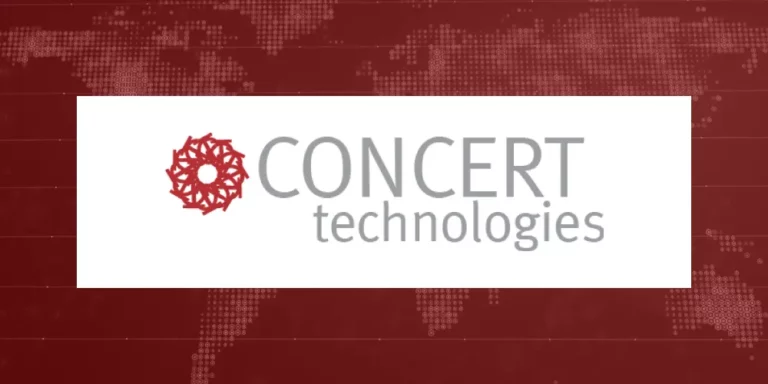Because of the competitive advantage that Internet of Things (IoT) devices can deliver to business, enterprises are constantly seeking new and innovative ways to align their technology deployment strategy with their strategic business goals. Whether it is new technology to enhance customer experience, maximize product and service monitoring, or to revolutionize warehousing, the ability to rapidly deploy new IoT technology across large geographical areas is increasingly important to the C-suite.
Large scale IoT projects also create numerous challenges for IT and Operations teams. New technologies must be deployed smoothly and efficiently to reinforce the understanding that IT and Operations are well-aligned with the strategic goals of the business; but to deploy any technology, the existing communications infrastructure must also be able to handle the data it will receive post-implementation.
Important questions must be asked about the current state of each site’s communications infrastructure.
Do the back-end systems need updating? Is there sufficient communications bandwidth to support the increased traffic?
For many national and multi-national companies, answering these questions for each location is a challenge they have never addressed before. Historically, technologies are deployed slowly, with each location receiving upgrades depending on their corporate importance, location, and ease of integration.
Executives implementing new IoT products today are expecting to deploy their solutions on accelerated timelines. They design strategies to reduce risk, cut cost and improve operational results across the entire company’s footprint, but the complexities of integrating with the communications network that their IoT solutions rely on is often underestimated. No matter how ‘simple’ the C-Suite thinks the rollout will be, there are hundreds of things that could, and most probably will, go wrong.
In this article, we outline the benefits of IoT solutions to modern enterprises and the critical relationship between technology rollout project management and successful IoT deployments.
The Benefits of IoT to Modern Business
Deploying new enterprise IoT technology is about building better products, improving services and boosting workforce productivity. These solutions are provided by IoT devices (POS displays, factory machinery (often referred to as Industrial IoT, or IIoT), sensors, consumer products, and other physical devices connected to the Internet) installed at operational locations and providing real-time feeds to a centralized database.
Evolved Service Offerings
The flow of IoT data enables improved diagnostics and device lifecycle management, automated updates, and actionable product services. Innovative service offerings can then be deployed rapidly into the field to meet new standards or the evolving needs of customers.
Tailored Training Programs
In some sectors, applying pattern recognition to IoT data can yield operational insights on top of which training programs can be developed to address on-site problems. With such programs in place, continuing analysis is used to measure the effectiveness of the programs that are implemented.
Advanced Partnerships
Where internal field service resources are not available, new IoT data centers facilitate third-party partnerships of service/maintenance teams. Standardized device data is easily transferred to professionals who specialize in outsourced project management, so that they can manage the process.
The Relationship Between Technology Rollout Project Management and Successful IoT Deployments
The implementation phase of any IoT project is critical to the technology’s ability to provide actionable data for the C-Suite to analyze. Before this can happen, the communications infrastructure of multiple office buildings, retail stores, warehouses, and campuses must be surveyed and verified, to ensure that the new solution can be supported.
This is where the disconnect between C-Suite expectations and the capabilities of the IT and Operations teams come to a head. Unless properly informed, the C-Suite may underestimate the scope of the project and assume their team can handle the rollout internally.
Technology Deployments are NOT A ‘Commodity’ Activity
The “anyone can do it” mentality is one of the hardest misconceptions about technology rollouts to disprove BEFORE a disaster strikes. The C-suite will often convince an inexperienced team, comprised of internal employees, that they can easily accomplish the rollout with the help of third-party field technicians. It’s not until the team is overloaded with ‘what-went-wrong’ emails that the C-Suite realizes that they should have dedicated more time and energy into the planning phase of the rollout.
It is essential that proper project management processes and methodology are put into place, qualified professionals are trained and each member of the team understands their responsibilities.
Required Management Overhead is NOT minimal
Project Management of communications infrastructure technology rollouts requires the cooperation of a lot of highly skilled professionals. The Project Manager, Project Facilitators, Warehouse Manager, Technology Manager, and Partnership Manager, and their respective teams, must all work together.
A Centralized, Single-Tier Process Structure will ensure that efficient communications lines are established between all field technicians and team members.
IoT Devices Are NOT All “Plug and Play”
Even if proper management teams are trained and put into place, C-suite might not understand all of the security concerns, network capacity issues, or communications infrastructure constraints that will inhibit the team from successfully deploying the new technology. They often assume that the existing infrastructure from previous technological upgrades will be sufficient to handle new deployments.
It is important that each site is surveyed and all necessary updates reported PRIOR to the rollout’s initiation. This will guarantee that all equipment can be shipped to the site and that the site technicians will know exactly what is needed to complete the upgrade and implement the device.
The Bottom Line
Successfully delivering IoT technology rollouts across large geographical distances is a time-consuming and technically complex process. Surveying and documenting the existing infrastructure at each site, deploying the technology, and then maintaining the physical devices is a massive undertaking.
More often than not, the internal team does not have the necessary resources to successfully complete the rollout, let alone finishing it on-time and on-budget.
Creating scalable solutions to tackle any project requires that you adopt a proven Technology Rollout System. Following a detailed project management methodology, which is built on a foundation of standardized practices, will ensure successful IoT technology deployments.




